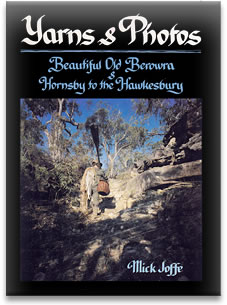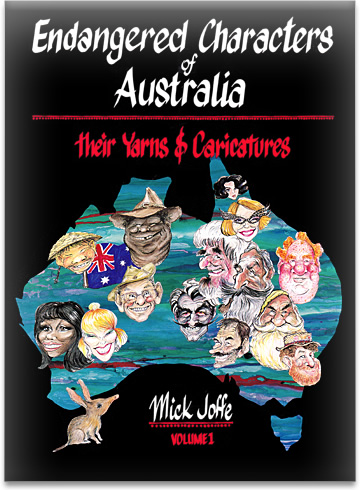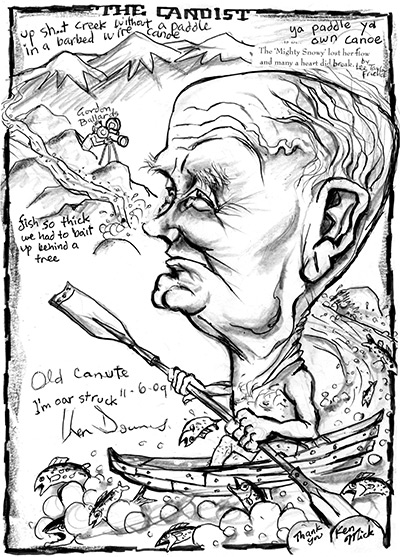 Yarns & Photos
We have found in storage the last few boxes of the original 1992 print. This book has not been re-released. These won't last long!
$149 + Postage
Buy Now
Yarns & Photos
We have found in storage the last few boxes of the original 1992 print. This book has not been re-released. These won't last long!
$149 + Postage
Buy Now
 Endandgered Characters of Australia
We have found in storage the last few boxes of the original 1995 print. This book has not been re-released. These won't last long!
$149 + Postage
Buy Now
Endandgered Characters of Australia
We have found in storage the last few boxes of the original 1995 print. This book has not been re-released. These won't last long!
$149 + Postage
Buy Now
 Living Relics of Australia
Living relics contains 25 of our greatest living characters. This coffee table hard-cover book combines the very Australian art of caricature with oral history - the history of drovers, shearers, naturalists, miners, artists, explorers, etc. Their caricature captures them on the outside and their own words capture them on the inside.
Only $29 + Postage
Buy Now
Living Relics of Australia
Living relics contains 25 of our greatest living characters. This coffee table hard-cover book combines the very Australian art of caricature with oral history - the history of drovers, shearers, naturalists, miners, artists, explorers, etc. Their caricature captures them on the outside and their own words capture them on the inside.
Only $29 + Postage
Buy Now
Published online: Thursday, 21 October 2010
Ken Downes
1927 Chatswood NSW
Snowy River Canoeing
My father’s grandfather was John Downes from Falkirk, Scotland and was the first Presbyterian Minister in Tasmania. My mother’s family came from Clunes in the Ballarat area. They were farmers and grew food for miners in the first gold rushes of Victoria. In 1938 I met my father’s great-uncle Hugh Downes, he was 94 and he was one of the troops in the roundup of Ned Kelly. He was at Glenrowan as part of the back-up troops. I remember him saying he owned the first shop in Broken Hill. Prior to that he was a hawker with horse and wagon. He lived off salt beef, tea and flour like the drovers yet he died at 96. Earlier he left Clunes on horseback to work on the pearling luggers for a year. He was held up one night somewhere in Queensland on the way back to look for his lame horse; his two companions continued on and were speared by blacks. He settled in Kingaroy, Qld and opened up a General Store at Bell and had about eight sons, so Downes are all over the place up there.
My father, John Downes was a major achiever. He was chairman of the National Fitness Council o he had a lot to do with Paddy Pallin. He was in the Parks and Playground Movement and was chairman of the Youth Hostel Association when it first started through the National Fitness Council in about 1939. Paddy Pallin was an instigator of that too. My father as very strong in the Presbyterian Church as a major advisor and had a lot to do with the Rev John Flynn. He was chairman of the Sustenation Fund, giving sustenance to the young ministers of Australian Inland Mission.
John Flynn used to come out to our house for lunch sometimes, always dressed up, very tall. Once my father said “It’s a very hot day” and Flynn said “Yes, Bloody hot!” and I remember it really shocked my father who was much more Scottish Presbyterian. I was a ten year old boy looking up at John Flynn and he had a real presence to him, real old-world, there was just something about him.
We used to do a lot of canoeing in Summer and bushwalking in Winter. I was in the River Canoe Club of NSW. As a younger adventurous group we looked for white water, it was our passion, the snow fields and water. Mostly we manufactured our own canoes from when I joined at about the age of twenty. I worked for the Forestry Commission. We used highly selected spotted gum ribbing which was steam bent, covered with 1202 canvas duck heavily painted and covered below the water line with strips of tallowood as a wearing surface, as we were hitting rocks all the time. The top was covered with a canvas cover. Their style was across between a Canadian canoe and a bath-tub. The paddles we mostly made by a George Towns of Gladesville, Sydney. He used to make all the rowing skiffs for the GPS schools for the Head of the River.
We used to send three canoes down the rail to Bombala or Cooma and then hire a local farmer and his pick-up truck to take us out to the river and organise him as a pick up later. We’d be out usually for ten days and myself covered the Snowy system from the Eucumbene River out of Kiandra with a drop of just under 5,000 feet to Orbost. We did it in sections, Upper Snowy, Middle Snowy and Lower Snowy.
Gordon Ballard, a member of the Club, was slightly eccentric. He hired a 16mm Kodachrome film camera, although he wasn’t very experienced. He was just one of the group he was just one of the group and as he was slightly eccentric, nobody took any notice of him, wasn’t taken seriously. So there was no camera shyness and his is the only record we have of the trips and the snowy River as it was before the Snowy Mountains Scheme drained it away to a trickle, the Snowy Drain. The first trip we did was in 1948 in Summer after the snow melted. In 1946 the first bulldozers began on the Snowy, just exploration work on the Eucumbene. The Snowy River was pristine. On the Snowy I did three trips, each about 100 miles, taking our time. We never hurried, about 10 days each time. On one of them we had about 5 days of our holidays left so we walked over Mt Kosciusko.
When we came down the Snowy in 1948, we had breaks. We often climbed up high to get our bearings, the country that Banjo Paterson writes about. It’s right on the bloody border, it’s very close ‘cause as we ran down it as kids we could see the actual sparks off the flintstones. It’s just north of Suggan Buggan, and southeast of Ingebyra… the whole area is straggly Murray Pines growing up through the flintstone screen. It’s near the junction of the Jacobs and the Pinch rivers.
The Snowy River had been travelled once before, in 1936, in a rowboat by two fellows, Hanson and Hunt, professional fisherman. It was horrific. One fellow suffering a bad gunshot wound and extremely difficult conditions because of the size of the boat and the lack of maneuverability. How far they got I’m not sure but they wee the first people to attempt it. Our group was the second and we were certainly the first people who canoed the Snowy River. It was all dehydrated food, dehydrated beef from the war, rice, dried egg, dried milk, potatoes and vegetables. We made puddings and damper and came across a couple of herds of unbranded sheep, so we shot a couple of those, all long tails on them, just wild. We also caught trout and on the lower end, bass. I shot a couple of ducks. On our military map there was “The Hill where Dick got Frightened.” On the lower section we went up a hill to a hut and there was an old fella with a long white beard like Father Time. He said “I’ve been sitting here for 20 years and you’re the first people I’ve ever seen walk up from the river.” We asked him about ‘the hill.’ After we primed him with a couple of nips of rum he said “I knew Dick and when Dick was trying to herd a mob of stampeded cattle, he herded the run-offs, but came to the end of a ridge. The cattle went over, so did his horse, but he saved himself on a branch of a tree, hence the name.” But we were quite sure this ol’ fella was having a lend of us, funny ol’ fella. Well we’d stand in the canoe and talk to each other. If we could see the pool below the rapid we could usually shoot it or else we would rope through or carry and or drag the canoes around the rapid. Well overall. The Snowy starts about 7,000 feet, only a trickle, not canoeable until it gets down to 5,000 feet. Our attitude was, we didn’t do things for racing to be first, but to enjoy it and we liked to know what was around the corner. I remember as young fellas we’d go flying down the rapids and the cries and yelps of exuberance, we did it for pure fun.
Gordon Ballard came along and filmed much of it and it was bloody wild. He became semi-professional, he was a bit alternative and he also filmed hippy happenings at Nimbin. He registered himself as Outdoor Films of Australia. I know the Mitchell Library has his films and so do the National Film and Sound Archives in Canberra.
One of the other canoeists was my brother-in-law Barry Curtis, now of Canberra. His welfare and mine were dependent on each other a few times in rapid situations. Other people were John Elkins, now of Cooma, Jack Kennedy, deceased, Hugh Bignold of Repton near Coffs Harbour (still alive at about 95), George Zionzee of Gladesville, Stan Shenstone of Pennant Hills, George King of Cronulla, that was the group I went with.
Gordon Ballard died about a year ago in his mid seventies. His film of the snowy canoe trips is now much sought after by environmental group campaigners to get the flow back into the once awesome Snowy River. I personally think 25 or 35 percent of the flow would be a pretty good compromise because the almighty dollar has gone just a bit too far. There’s no justification in directing rivers inland just because it gives jobs or increases he luxury of the present farmers. The air and land and water should belong to everyone. Always question your parents, your teachers, your religious advisors and make your decisions using the god-given attributes between your ears; otherwise you’ll end up like a bit of software, preprogrammed by other people. That really goes back to my student days at the Sydney Technical College which became the University of Technical Education. A professor Phillip Baxter, later Chairman of the Atomic Commission of Australia, he was teaching students, and suggested to them their attitude should be a little different. He put one dot in the middle of the blackboard and asked “What do you see? A dot?” then he said “None of you can see the blackboard. Hah!
I was still a student, there was a quarantine alert so although I was a chemist, I used a more practical way of following fumigation technique. Instead of testing chemically, I tested with insects, Australian native borers. I drilled the blocks and put a dozen or so in each hole. After the exposure to the fumigant gas for about 24 hours they were dead. Then we tested on Australian native insects, similar to the Sirex wasp, which also gave a true result. This gas was methyl bromide. I was in a lecture and got a call from quarantine in Canberra. I was only a kid, ha! And those bigwigs were phoning me up and asking me about it and that became the basis for commercial fumigation. Subsequently 200 horses were fumigated in Brisbane by putting big plastic sheets over them and fumigating them with methyl bromide in the early 1950’s. It was absolutely wonderful in fumigating soil. The company that benefited gave me a job, Houghton and Byrne and I went down to Melbourne and we did a lot of soil fumigation to degerminate weed seeds in a commercial nursery and it’s still used, but a bit controversial now because of its greenhouse effect.
When I was still a student doing my degree in Chemistry I was working for a plastics firm in Mosman, W.J. Manufacturing. They’re still alive! Ha! The boss came back with a sample of polyester and fibreglass from America with a view to making commercial tanks for the chemical industry, which was their field of work. I suggested it would be better making boats and was rebuffed, but allowed to play around with trying to make a surfboard at my own expense in my own time. So I thought I would make a surfboard out of polyester fibreglass with a bitumen foam centre. See the only foams you could get those days, about 1953, were black bitumen foams used for refrigeration insulation. So I borrowed a good quality plywood surfer from a friend and started to make a plaster mould from top to bottom. At that stage I got an offer from a pest control firm in Melbourne and shot through and left the plaster mould under the house and it’s still there to this day. My son Andy said he went there 3 years ago and it’s still there and he found it, at Avalon Beach. That house belonged to my mother, Edith Blanch Downes. It was built by my father in 1926 for six hundred pounds. If I hadn’t got the job, and had poured the other half of the mould and filled it, well, it would have been the first fibreglass surfboard built in Australia by many years.
Mick Joffe
More Characters
Since the early 1970s, Mick Joffe's passion has been to caricature and record endangered characters of Australia, and the world. As of 2015, the majority of these interviews exist only in manuscript form.
Click here to see the full list of interviews...
 Yarns & Photos
We have found in storage the last few boxes of the original 1992 print. This book has not been re-released. These won't last long!
$149 + Postage
Buy Now
Yarns & Photos
We have found in storage the last few boxes of the original 1992 print. This book has not been re-released. These won't last long!
$149 + Postage
Buy Now
 Endandgered Characters of Australia
We have found in storage the last few boxes of the original 1995 print. This book has not been re-released. These won't last long!
$149 + Postage
Buy Now
Endandgered Characters of Australia
We have found in storage the last few boxes of the original 1995 print. This book has not been re-released. These won't last long!
$149 + Postage
Buy Now
 Living Relics of Australia
Living relics contains 25 of our greatest living characters. This coffee table hard-cover book combines the very Australian art of caricature with oral history - the history of drovers, shearers, naturalists, miners, artists, explorers, etc. Their caricature captures them on the outside and their own words capture them on the inside.
Only $29 + Postage
Buy Now
Living Relics of Australia
Living relics contains 25 of our greatest living characters. This coffee table hard-cover book combines the very Australian art of caricature with oral history - the history of drovers, shearers, naturalists, miners, artists, explorers, etc. Their caricature captures them on the outside and their own words capture them on the inside.
Only $29 + Postage
Buy Now
 Caricature of Ken Downes, by Mick Joffe
Caricature of Ken Downes, by Mick Joffe
 Bill BarnesPioneer radio personality & famous bailiff
Bill BarnesPioneer radio personality & famous bailiff Geoff MackCountry music singer and songwriter
Geoff MackCountry music singer and songwriter Fred CostelloSpeared by Aborigines
Fred CostelloSpeared by Aborigines Lindy Chamberlain“A dingo took my baby!”
Lindy Chamberlain“A dingo took my baby!” Sir Edmund HillaryFirst man to climb Mount Everest
Sir Edmund HillaryFirst man to climb Mount Everest Bob McMawOlest man in Australia, reflections on Queen Victoria
Bob McMawOlest man in Australia, reflections on Queen Victoria